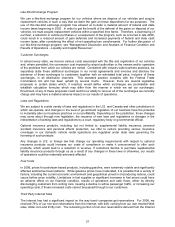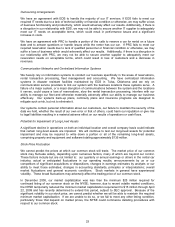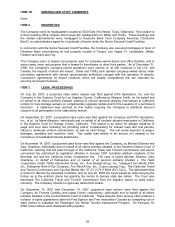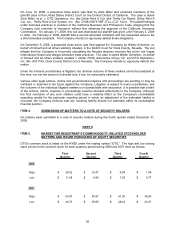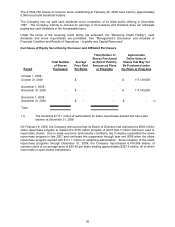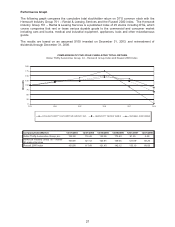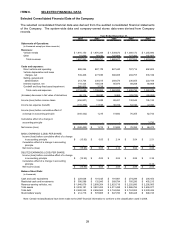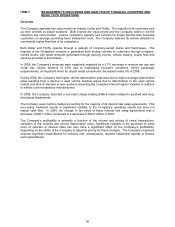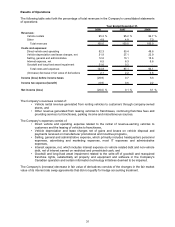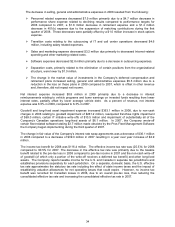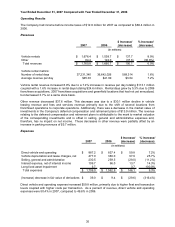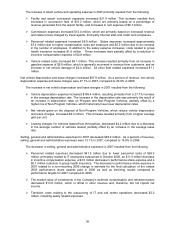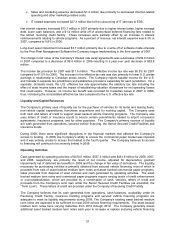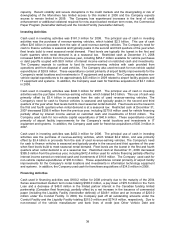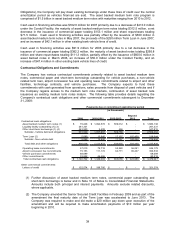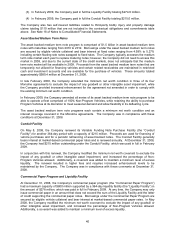Thrifty Car Rental 2008 Annual Report Download - page 32
Download and view the complete annual report
Please find page 32 of the 2008 Thrifty Car Rental annual report below. You can navigate through the pages in the report by either clicking on the pages listed below, or by using the keyword search tool below to find specific information within the annual report.
ITEM 7. MANAGEMENT’S DISCUSSION AND ANALYSIS OF FINANCIAL CONDITION AND
RESULTS OF OPERATIONS
Overview
The Company operates two value rental car brands, Dollar and Thrifty. The majority of its customers pick
up their vehicles at airport locations. Both brands are value priced and the Company seeks to be the
industry’s low cost provider. Leisure customers typically rent vehicles for longer periods than business
customers, on average, providing lower transaction costs. The Company believes its vehicle utilization is
consistently higher than that of its competitors.
Both Dollar and Thrifty operate through a network of company-owned stores and franchisees. The
majority of the Company’s revenue is generated from renting vehicles to customers through company-
owned stores, with lesser amounts generated through parking income, vehicle leasing, royalty fees and
services provided to franchisees.
In 2008, the Company’s revenues were negatively impacted by a 2.7% decrease in revenue per day and
rental day volume declines of 0.9% due to challenging economic conditions. Airline passenger
enplanements, an important driver for airport rental car demand, decreased nearly 5% in 2008.
During 2008, the Company had higher vehicle depreciation expenses due to higher average depreciation
rates resulting from a decline in used vehicle residual values due to deterioration in the used vehicle
market and lack of demand at auto auctions impacting the Company’s Non-Program Vehicles in addition
to vehicle cost increases by manufacturers.
In 2008, the Company recorded a non-cash charge totaling $366.8 million related to goodwill and long-
lived asset impairments.
The Company uses mark-to-market accounting for the majority of its interest rate swap agreements. This
accounting treatment results in significant volatility to the Company’s operating results but does not
impact cash flow. In 2008, the change in fair value of these interest rate swap agreements was a
decrease of $36.1 million compared to a decrease of $39.0 million in 2007.
The Company’s profitability is primarily a function of the volume and pricing of rental transactions,
utilization of the vehicles and vehicle depreciation costs. Significant changes in the purchase or sales
price of vehicles or interest rates can also have a significant effect on the Company’s profitability,
depending on the ability of the Company to adjust its pricing for these changes. The Company’s business
requires significant expenditures for vehicles and, consequently, requires substantial liquidity to finance
such expenditures.
30



